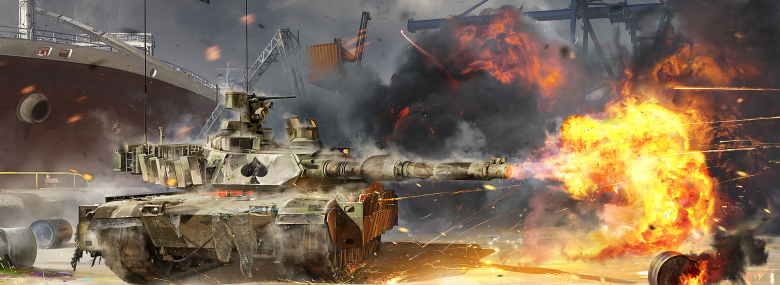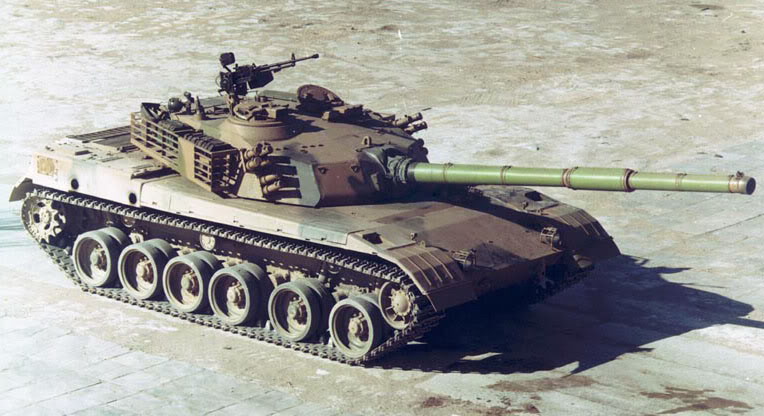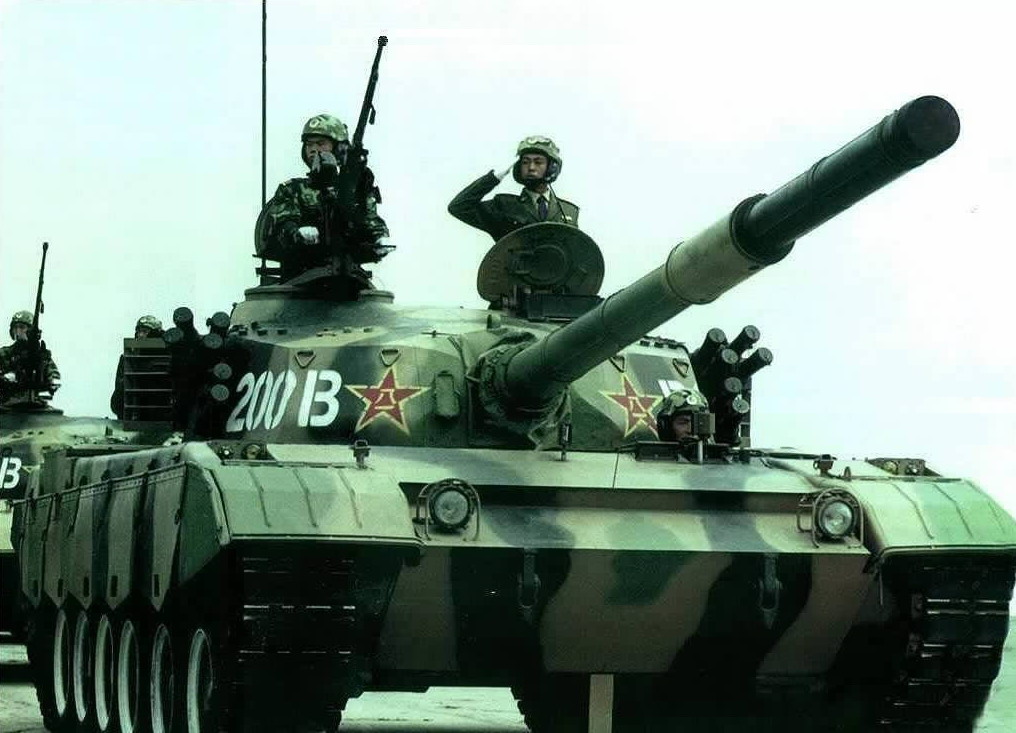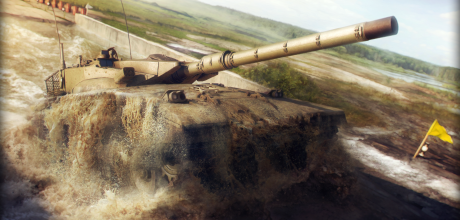
The Type 96 Main Battle Tank is the ultimate evolution of the second generation of Chinese MBTs that started with the Type 80 and branched into two parallel development lines:
- Type 88 for Chinese domestic use (several hundred built)
- Type 85 for export (exported mainly to Pakistan)
The Type 96 is mostly a Chinese domestic tank, but its roots lie in a cross-over between the domestic and import branches, specifically the Type 85-III.

Type 96 Prototype
The Type 85-III was the last step in the Type 85 export line. The prototype was developed based on the Type 85-IIM export version for Pakistan. It was developed in 1993 by NORINCO (just like the previous Type 85 variants) but featured a large number of improvements over the older Type 85-IIM, including but not limited to:
- New, powerful 1000hp turbo-diesel engine (the weight increased to 44 tons but the performance remained the same thanks to this upgrade)
- New transmission of the same type the T-72 uses
- New ERA kit
Reliable information about Type 85-III is, as it usually is with any Chinese tanks, hard to come by, but the tank was offered on foreign market starting from 1994, but the attempt to market it was unsuccessful. It participated in comparative trials with the Ukrainian T-84 MBT in Pakistan in 1995. During the tests, the tanks fared roughly the same with the Type 85-III having a slightly better gun but at that time, the T-80UD was already mass-produced while the Type 85-III was still just a prototype and had some teething issues. The fuel tank, for example, was too small due to the Chinese requirements. The oil lubrication was also insufficient due to the extreme heat the tests were conducted in, which led to an engine failure. In the end, the T-80UD was declared as the winner and Pakistan ordered some 320 tanks that were more or less successfully delivered between 1997 and 2002.
As a result of this failure, the promotion of Type 85-III was basically dropped. The developers were quite happy with the tank, claiming that in combat value it was on par with the Russian T-80 and T-90 series. And this is where the story of the Type 96 started.

Type 96
In 1991, the Chinese military underwent a massive shock in the form of the absolute decimation of Iraqi forces by the Americans during the Gulf War. Not that the Chinese military experts haven’t been aware of the growing obsolescence of their designs – they have, but the sheer scope of destruction was even worse than what the most pessimistic estimates predicted. As a result, the development of a new, third generation Main Battle Tank was accelerated, but such things take time. Aware of the increasing delays, the Chinese turned to possibly the best armored vehicle they had developed – the Type 85-III prototype.
In 1996, the design was officially approved – with some modifications as the Type 96 Main Battle Tank. In China, it’s also known under the alternative designation of Type 88C that relates to the domestic branch of the Type 80 development, but the basis for it is the Type 85-III prototype, albeit downgraded it to ensure the best reliability.
Thus, the original Type 96 resembled the Type 85-IIM more than it did the Type 85-III. It did have its welded turret and the 125mm gun, but it lacked ERA and the 1000hp up-tuned engine.
In its original form, the vehicle weighed 41 tons and had a crew of three (Commander, Gunner and Driver).
The armor protection was roughly equal to the one of the Type 85-IIM. The turret consist of composite armor, no ERA was installed. The hull is full-steel with applique composite armor. The manual states the following numbers for the protection levels:
- Frontal protection of the hull equals to 380mm of RHAe versus kinetic shells and 600mm versus HEAT shells (comparable T-72M1 numbers are 360mm and 500mm)
- Turret protection equals to 450mm of RHAe versus kinetic shells and 850mm versus HEAT (comparable T-72M1 numbers are 410mm and 500mm)
The sides are, however, very thin with only 50mm of steel armor. The sides were protected by rubber skirts, giving it some level of protection versus incoming HEAT rounds.

Type 96
The vehicle was powered by the 730hp 12150ZLC V12 turbocharged diesel engine, allowing it to go as fast as 57 km/h (although the off-road maximum speed is only 32 km/h). The transmission was the same type as on the Type 85-III.
The vehicle was armed, like the Type-85-IIM, with the automatically loaded 125mm smoothbore ZPT-98A L/48 cannon (a copy of the 2A46, obtained from a T-72 from Romania). The main round this gun fired was a NORINCO-developed 1730 m/s APFSDS round that can allegedly penetrate 500mm of RHAe at 2km. The tank could fire standard Warsaw Pact 125mm rounds as well.
The rate of fire of this gun was some 7 rounds per minute. The maximum depression was -5 degrees when facing forward and -2.6 degrees when facing backward, the elevation was +13.5 degrees forward and +15.9 degrees backward. The vehicle carried 41 shells (22 in the autoloader and 19 within the hull). The advanced Fire Control System (ISFCS-212) was shared with the Type 85-IIM.
After successfully passing the state tests, the initial production of the Type 96 started in 1997 and ran roughly until 2005 with around 2000 vehicles produced (although a half of it consisted of the modernized Type 96A that will be covered in a different article). At this moment, the People’s Liberation Army is estimated to still operate around 1000 tanks of this older type.

Type 96
Curiously enough, despite the vehicle being intended for domestic use, an unknown number (perhaps two dozen) of them found its way to Sudan, possibly around 2006 to 2007. There, they participated in the government service in the fighting against South Sudanese forces, knocking out several T-72 tanks (at least one T-72AV). The details of this deal are unknown. It’s worth noting, however, that while the Type 96 generally outclasses the older T-72 models, the results of such clashes often depend more on the crew skills than on the vehicle itself as both tanks are capable of knocking each other out.
In Armored Warfare, the Type 96 will be a progression vehicle with its variants appearing in reward or premium roles.
We’ll disclose more information about the Type 96 variants in the near future!








